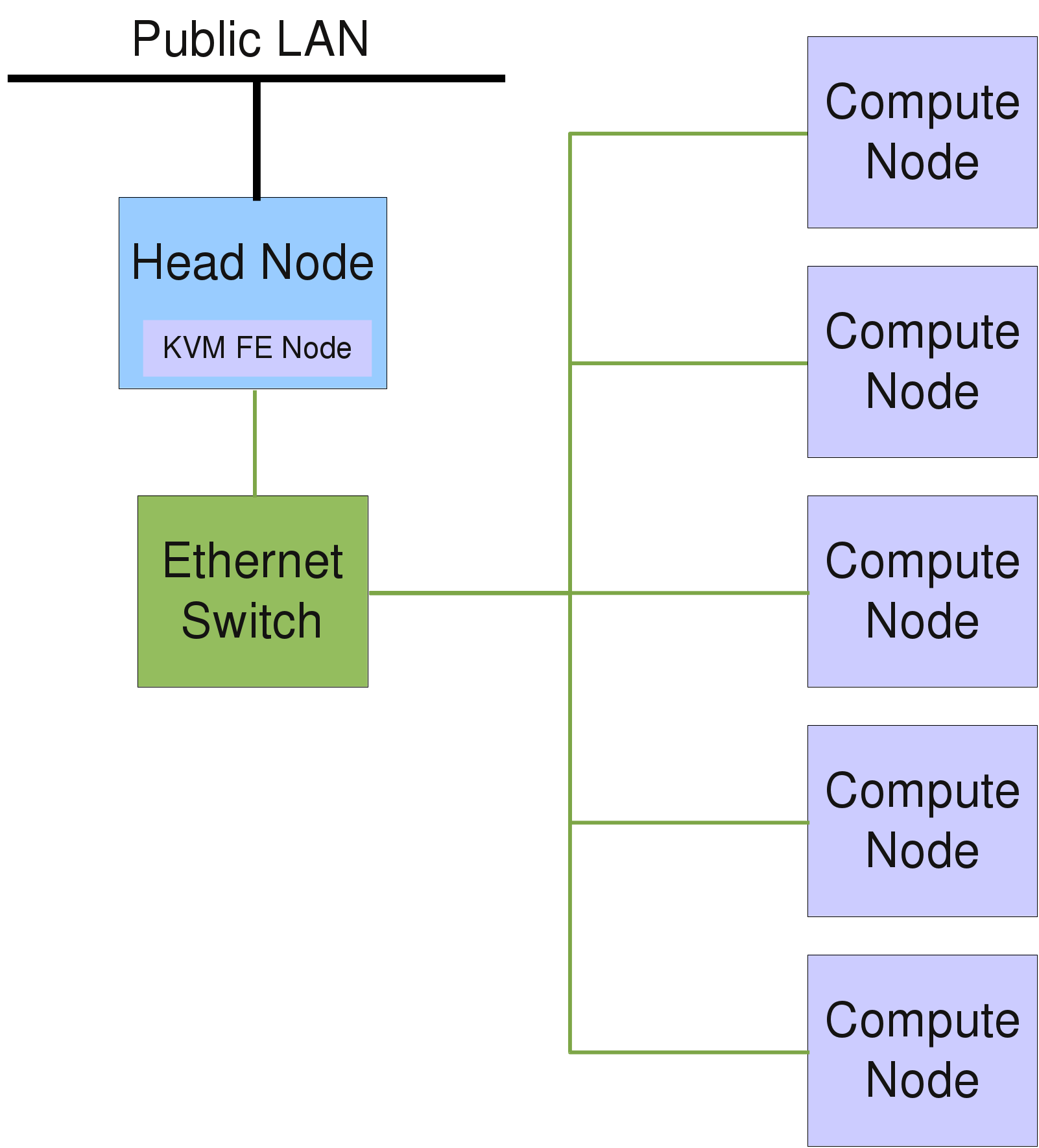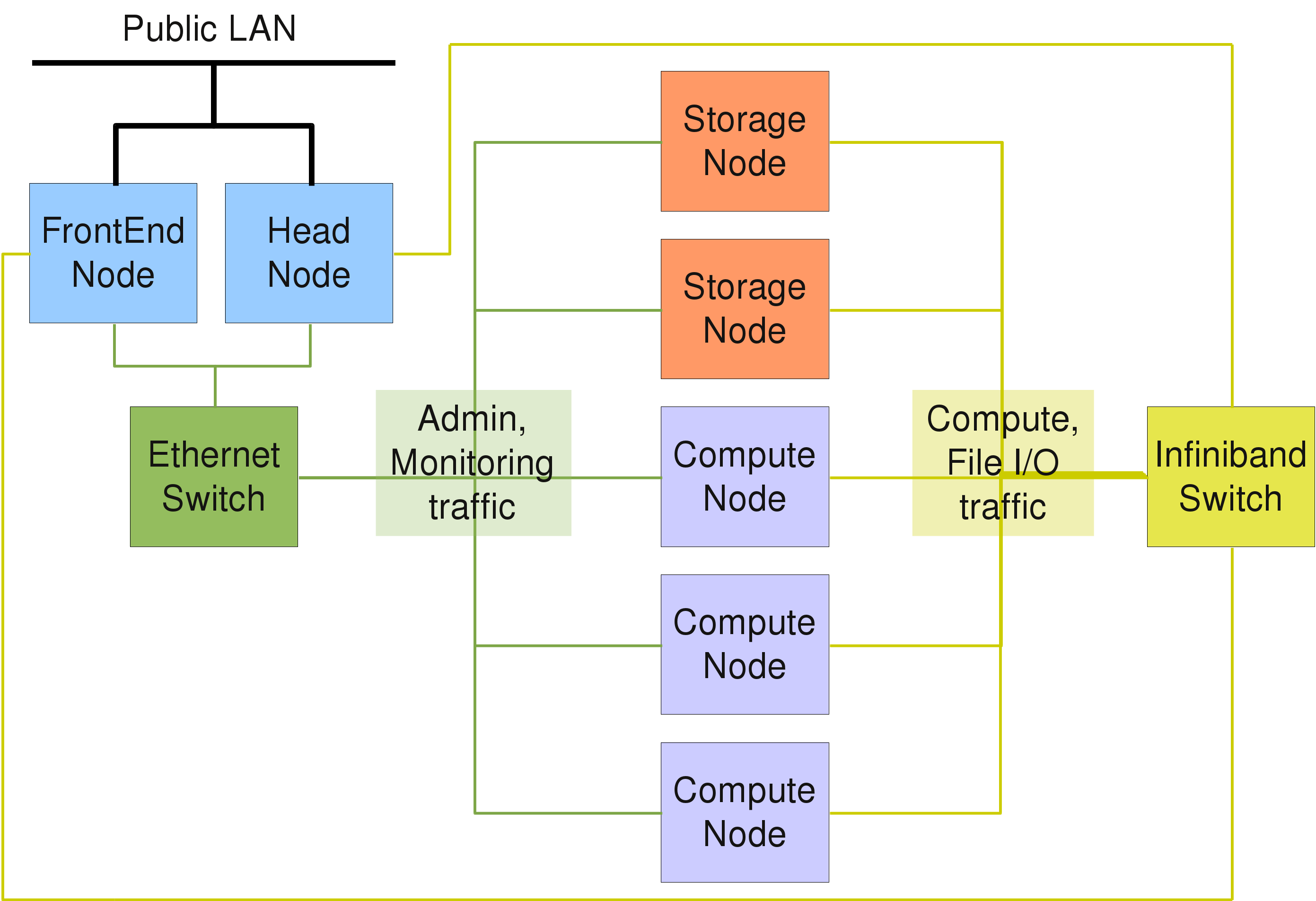Introduction
Qlustar is a full-fledged Linux distribution based on Debian/Ubuntu. Its main focus is to provide an Operating System (OS) that simplifies the setup, administration, monitoring and general use of Linux clusters. Hence we call it a Cluster OS.
A Qlustar cluster typically consists of one or more head-nodes, head-node and a larger number of compute-, storage- or cloud-nodes (in this manual we usually refer to these latter nodes simply as compute-nodes). In an HPC cluster, it is highly advisable to separate user login sessions onto dedicated Front-End (FE) nodesFront-End nodes. This leads to higher stability and security of the whole system, since then the head-node(s) (its most critical component), are not subject to problems arising from uncontrolled user activity. The FE node(s) can run on real physical hardware or (especially on small clusters with less activity) in a virtual machine (VM).
|
Qlustar has an installation option that allows the automatic setup/configuration of a KVM FE node. |
For clusters with advanced file I/O performance requirements, the basic Qlustar configuration providing an NFS based setup to serve user home directories will be insufficient. In this case, a parallel file system like Lustre or BeeGFS will be needed. With QluMan, it’s easy to add storage nodes to a cluster, that will be able to serve Lustre MDTs and OSTs or BeeGFS server components (if required also in a fail-safe high-availability configuration).
Usually, all nodes in a cluster are connected through one or more dedicated internal Ethernet networks. If fast inter-node communication is required, an additional high-speed interconnect network like Infiniband may be used.

Most of the time, compute and cloud nodes are stripped-down servers with SSDs or SATA hard disk drives (sometimes also disk-less), often without keyboard and mouse connection. These days, servers typically have a remote management interface (IPMI), that allows to perform most hardware related tasks of a node (like reset, power cycling etc.) over the network. In addition, IPMI provides remote access to a nodes console.
The above figure shows a schematic description of the components building a basic HPC Cluster. The head-node typically requires a more powerful hardware configuration than the compute nodes to guarantee higher availability and to accommodate central disk storage. A Gigabit/10G Ethernet and/or Infiniband/OmniPath network are the most common network interconnects of HPC clusters today.

While the above entry-level hardware configurations will be sufficient for departmental clusters, a compute center will often have to provide a system with guaranteed up-time, scalable file I/O, as well as a high throughput / low latency network to satisfy the needs of demanding users. A schematic description of a hardware setup for such a scenario is shown in the following figure. Qlustar is equally capable to deploy such advanced configurations with little effort.